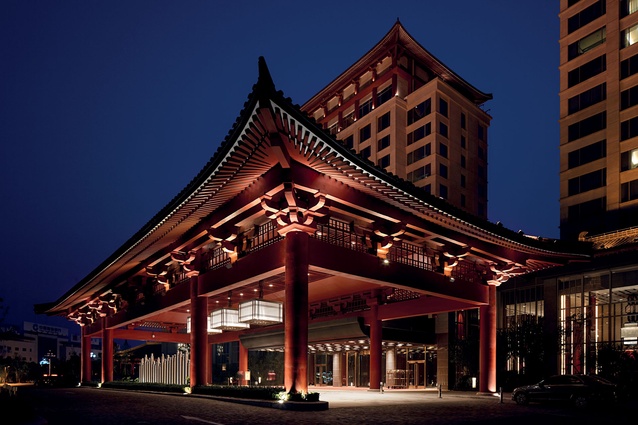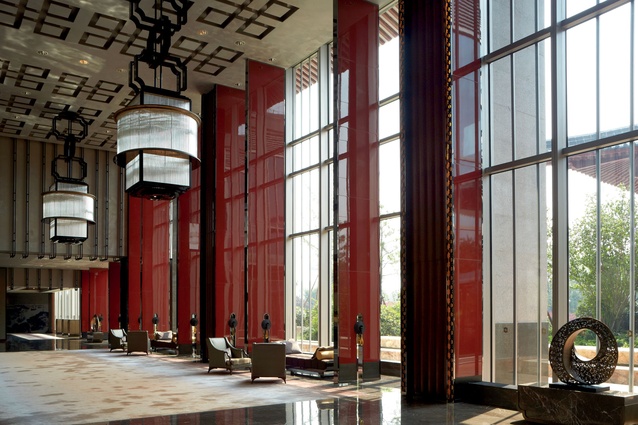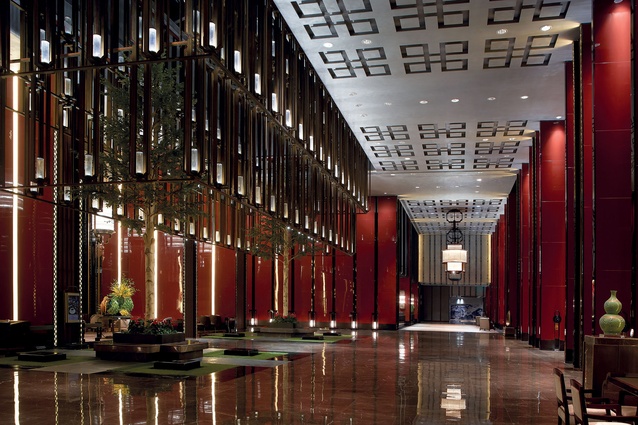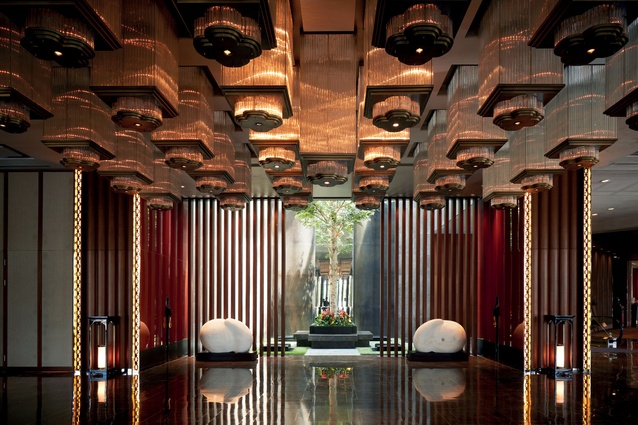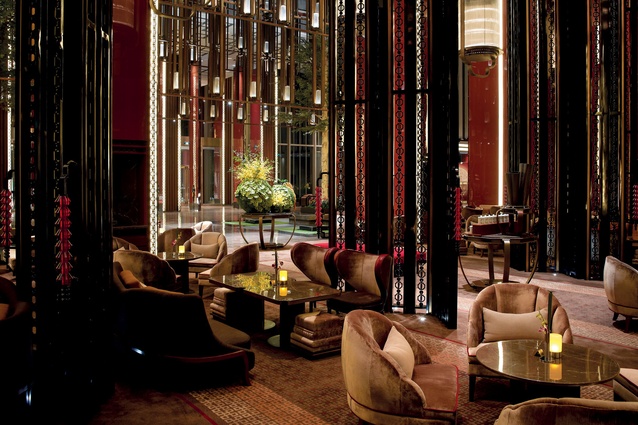Shangri-La Hotel
Hong Kong’s AB Concept was charged with building a landmark hotel in Qufu, the birthplace of China’s most
revered thinker: Confucius. The design firm’s co-director Ed Ng speaks to Interior about their process.
Interior: How did Confucius influence your design?
Ed Ng: The concepts of harmony, hierarchy and order are deeply rooted in Confucian principles, and we used these elements in our design. We also visited the Confucian temples and museums in Qufu to understand the art and craftsmanship in the historic buildings. We even used the pantone to match exactly the colour of the red lacquer in the temples that we then used in our lobby. The wisdom lanterns and intricate door handles were all inspired by the local arts and crafts.
Interior: Do you always consider the local design history before engaging with a project?
EN: The design history is, of course, very important, especially for this project. The hotel is the city’s first international luxury property, but it had to be respectful of its location and to reflect the attitude of the location. From the client brief, they wanted the design to maintain and celebrate the traditional Confucian values of the historic town, whilst also embracing China’s rising appreciation for luxury.
Interior: What does luxury mean to you?
EN: A lot of people give luxury a monetary value, but it is more about the character of a design and the comfort of a space. Luxury is expressed in unforced elegance and simplicity and adding bespoke items such as handcrafted fabrics and furnishings… rather than ornamental overkill.
Interior: China is a very strong consumer of Western luxury brands – are the design values from those products being incorporated into the local design vocabulary?
EN: Design is an international language, particularly in the hospitality industry. Our design philosophy is to extract the local culture with an international design direction and perspective. [Saying that,] design in China is moving away from opulent luxury and bling-bling style towards more understated elegance. People are now exploring the big concept behind each project and creating a narrative around it. Once you have a strong narrative, it becomes the core of your design and everything else falls into place.
Interior: Qufu is changing rapidly due to infrastructure and projects such as yours – what social responsibility do designers have towards cities?
EN: Maintaining the soul of the city and its character is the responsibility of the designer and architect. No matter how quickly the city is expanding, we believe in design being grounded in the roots of the legacy of its history. We should not let the speed of expansion subtract from the heritage; the design should be a continuity of the legacy and not overtake it… no matter how rapidly a city expands, it should retain its DNA always and not be transformed into another place.

